#i copied that from wikipedia
Explore tagged Tumblr posts
Text
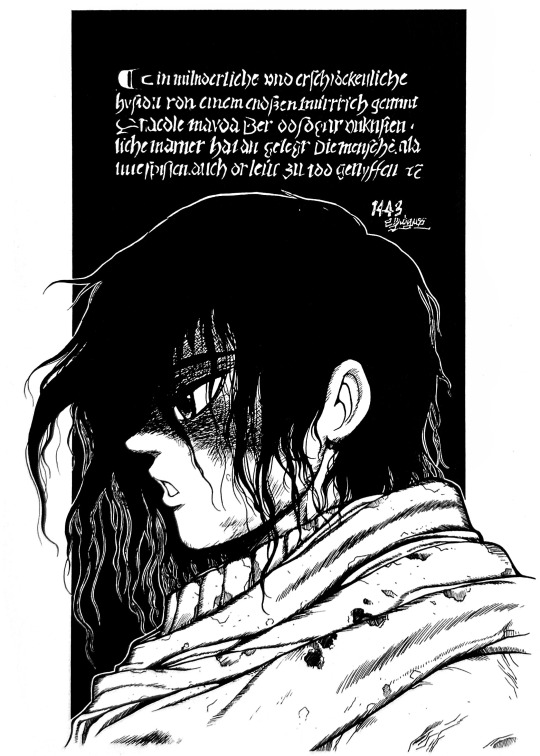
Hellsing 2002 calendar illustration.
Ein wunderliche und erschröckliche Hystori von einem großen Wüttrich genant Dracole wayda Der do so ganz unkristenliche marrter hat angelegt die mensche, als mit spissen als auch die leut zu Tod geslyffen
A wondrous and frightening story about a great berserk called Dracula the voivode who inflicted such unchristian tortures such as with stakes and also dragged people to death
#hellsing#alucard#kouta hirano#translation was found in a comment by u/lazyfoxheart on r/Kurrent#fun fact this is the highest quality version of this image that exists online#i know because i've been looking forever for a version that's clear enough to actually read what hirano wrote under '1443'#but there weren't any so i had to take matters into my own hands#the real image on the back of the guidebook is only 2 inches tall so i had to take this with my smartphone and will my hands not to shake#anyway i'm pretty sure it's supposed to say Eğrigöz (the location vlad was imprisoned) so yeah. thank you hirano very cool#if i might rant for a sec it took me an embarrassingly long time to figure that out because i didn't have the guidebook at first#and in the images i could find online that part was just a blur that looked suspiciously like a person's signature and i was like. who tf#i was thinking matthias corvinus since he issued some political propaganda against vlad iirc but it didn't match his signature on wikipedia#then i thought it might be vlad II dracul's since he probably had to sign an agreement to send his sons over as hostages at some point#but that didnt seem right either so i kept skimming vlad's wiki page#and then i was like goddammit...hirano.....you just misspelled Eğrigöz didn't you.. ....#i maybe should've made a separate post dedicated to this instead of writing a novel in the tags but eh#the hellsing brainrot runs deep#also- i put it in the source link at the bottom of the post but the german inscription is copied off a real woodcut of vlad from 1491#except instead of depicting him as an adult hirano drew him as a child which gives the inscription a very different feel imo#the one final thing that interests me about this is the fact that hirano published this calendar in 2002#which is REALLY early in the series. like this was before volume 5 came out??#i have no idea why he decided to do a massive spoiler drop in a random piece of japan-only merch#sandwiched between a drawing of alucard as john travolta from saturday night fever and integra as a fish no less#it makes me really curious to know what the fan response to this was back then. like did people even know who this was#maybe im just an idiot and everyone back then was like 'ah yes its alucard as a 12 year old. how very informative'
108 notes
·
View notes
Text
kids these days are always on their "ipad" "tablets." well, back in the day we had "tablets" too

only 2500s (BCE) kids remember 😂😂
#mesopotamia#history#orygynall poast#id in alt#sorry image description is not very good it's just what i copied from wikipedia. cannot transcribe it unfortunately lol
458 notes
·
View notes
Text
inspired by @something2believe's poll i wanted to know how my followers pronounce my name. arguably my name is quite international so there shouldn't be any "weird" versions of the pronunciation but i still want to know!
#no wrong or right answers#like i said a lot of languages have their versions of it so i'm 100% ok with people using their own versions#even i say my name with an english accent when speaking english#and a friend calls me 'veronique' in front of her french bf#so it's all good#copied the ipa spelling from wikipedia#the main difference is that in polish there's an 'oh' sound in the middle and in english there's more of an 'ah'#trying to explain pronunciation sucks hhhh#if you have some strange complex answer to this poll let me know in the comments or on anon
11 notes
·
View notes
Note
Who are all of the children of Maximilian in Bavaria and Ludovika in Bavaria? I only know Sisi
Hello! Sorry it took me so long, I’ve been putting together this answer for a while. This is a somewhat basic introduction to the siblings, since I didn’t want this post to be even longer than already is.
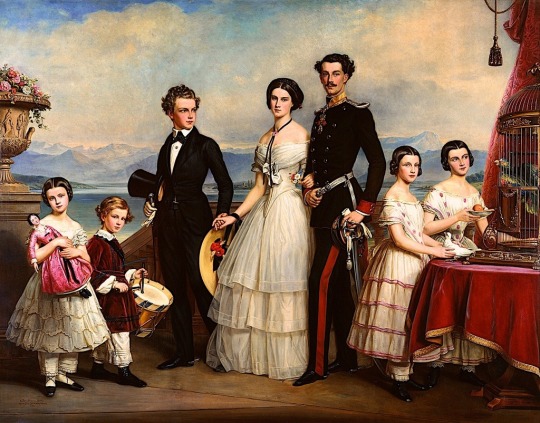
Duke Maximilian and Duchess Ludovika had a total of ten children, five girls and five boys. Their second son, Wilhelm Karl, sadly died at a month and half old, and their fourth son, Maximilian, was stillborn. The surviving eight children were (by order of birth): Ludwig Wilhelm, Helene, Elisabeth, Karl Theodor, Marie, Mathilde, Sophie and Maximilian Emanuel.

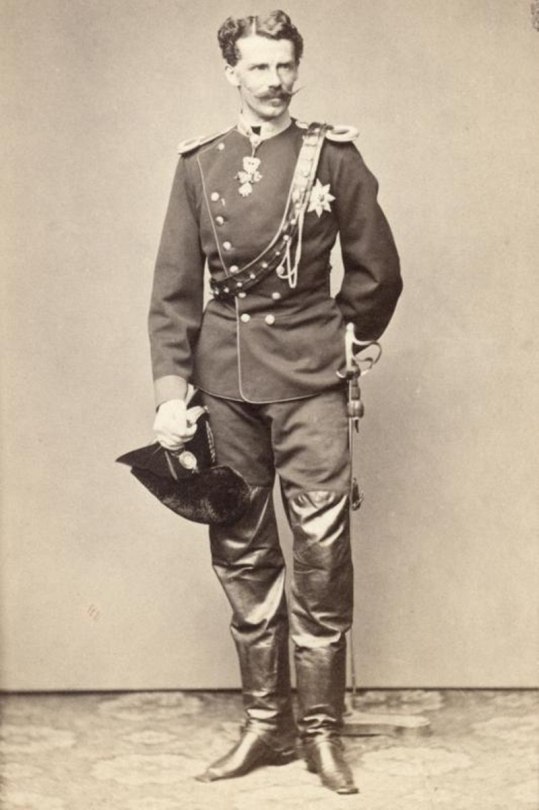
The eldest, Ludwig Wilhelm, born in 1831, was always known as “Louis” in his family. In 1858 he gave up his position as the future head of the Dukes in Bavaria branch in order to marry his mistress, former actress Henriette Mendel. He seems to have been somewhat difficult, at least judging by something Elisabeth told to her lady-in-waiting Countess Mária Festetics: “It is a good thing that Henriette is his wife, for anybody else would long since have left him, and he is happy with her.” What does this exactly mean I have no idea. Louis and Henriette had two children, Marie (born a year before her parents marriage) and Karl, who died as a baby. As was customary for Wittelsbach princes he did a military career, and in 1866 fought in the Seven Weeks War. We don’t really have much more information about him; many accounts about the Duke and his family that come after the Mayerling affair, in which his daughter Marie Larisch played a key role as the go-between Crown Prince Rudolf and Mary Vetsera, are heavily affected by the negative reputation that had befallen over her. His relationship with his sister wasn’t unaffected by this either, and he and Elisabeth became distant, though Elisabeth’s daughter Marie Valerie still wrote affectionately of her “Aunt Henriette”, so it may have been more out of a sense of awkwardness than Louis being directly blamed for the affair. He went to Elisabeth’s funeral, visibly affected by his sister’s death, and was one of the men who took her coffin to the Capuchin Crypt. A year after his wife’s death in 1891 he married actress Antonie Barth, forty years his junior. This marriage ended up in a divorce in 1913, after she had a child whom Louis claimed wasn’t his (I found some gossip articles about this on newspapers but that’s a whole rabbit hole I haven’t gone down yet). Ludwig Wilhelm died in Munich 1920, aged eighty-nine-years-old.
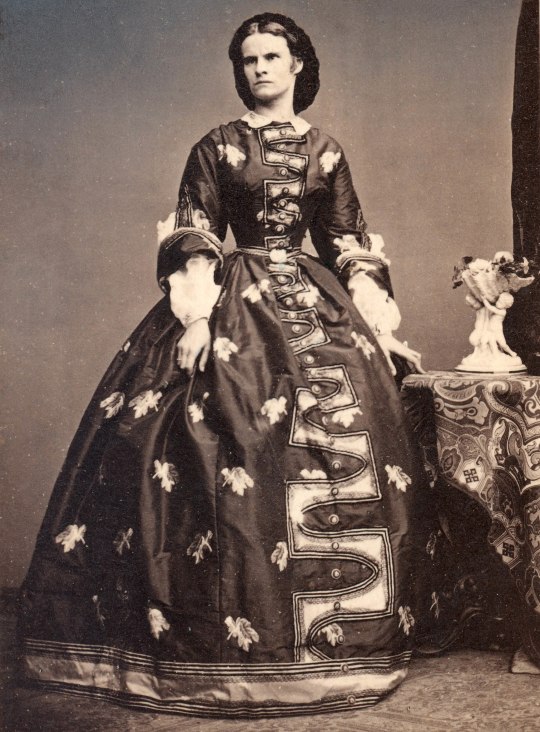

Born in 1834, the third child an eldest daughter, Helene, nicknamed “Nené” and “Lenza”, is probably the most known of Sisi’s siblings, and also the most misrepresented. She has gone down in history for being the disciplined, exemplary daughter that was groomed for years to become empress only to have “her fiancé” stolen by her younger sister. Except that none of this is true. In her old age Ludovika often complained that Helene had been a troublesome child who had caused her a lot of grievances. And it’s unlikely that Helene had ever expected, let alone been prepared, to become empress years in advance: not only there had been serious attempts to get Princess Anna of Prussia’s hand for Franz Josef in 1852 (why would they have done this if Helene was supposedly waiting in the wings to marry him?), but also when Ludovika was told that the emperor wanted to marry Sisi she became very emotional “for in her great modesty she had always doubted that the Emperor would really think in one of her daughters”.
By late 1857 Ludovika lamented that her daughter had pretty much become a spinster. But in the beginning of 1858 Helene met Maximilian, Hereditary Prince of Thurn und Taxis, and soon after he proposed. This marriage wasn’t well received by King Maximilian II, since the Taxis were subjects of the Bavarian king and therefore not equal to marry a Wittelsbach, but eventually King Max gave them the all-clear and they married. Reportedly the marriage was happy, but her husband sadly died only ten years later of an illness, and she fell into a deep grief. When Helene’s father-in-law died in 1871 she became the de facto head of the house of Thurn und Taxis until her son Maximilian reached the majority. Helene was sadly to suffer two more big blows in her life: in 1881 her daughter Elisabeth died of childbirth complications aged only 20-years-old, and in 1885 her son Maximilian died of cardiac problems aged only 24-years-old. Helene’s last years are said to have been very sad, since she never recovered from the untimely deaths of her husband and children. She died in 1890 at the age of 56, likely of cancer. At her deathbed were her two surviving children, Louise and Albert, and her sister Elisabeth.
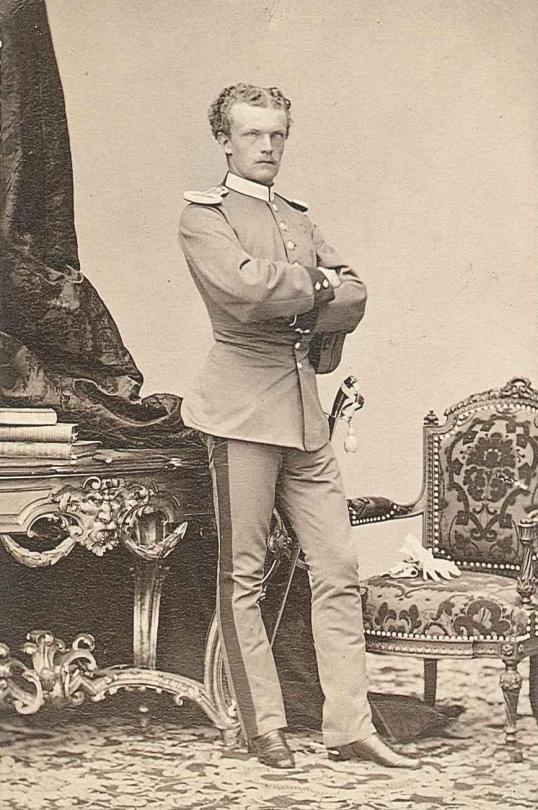
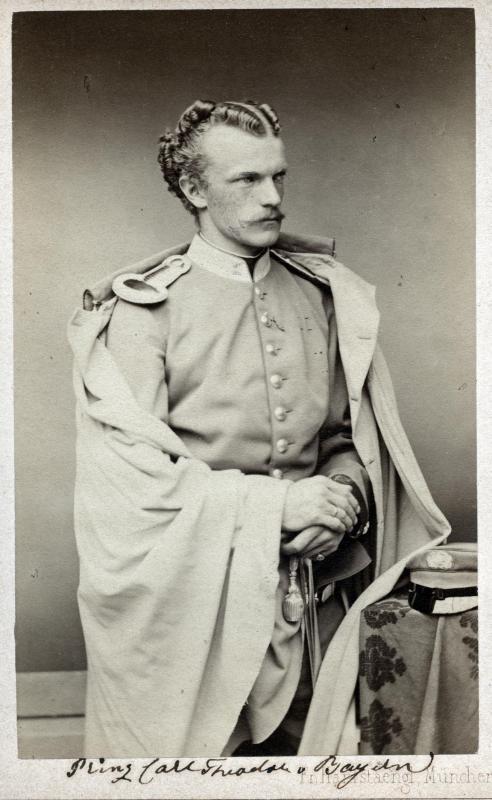
The fifth child and third son, Karl Theodor, called “Gackl” by his family, was Elisabeth’s favorite brother. He seems to have been a very charismatic man, since everyone that met him had nothing but good things to say about him. In 1865 he married his first cousin Princess Sophie of Saxony, and they had one daughter, Amalie. Sadly Sophie’s health was severely affected by childbirth, and died over a year later of influenza. Like his elder brother he also did a military career starting from a young age, and fougth in the Seven Weeks War. However, afterwards he left active service and went to the Ludwig Maximilian University of Munich, where he studied medicine. His studies were interrupted by the Franco-Prussian War, but he got his degree as a doctor in medicine, later specializing in ophtalmology. During this time Karl Theodor had remained a widower, but in 1874, seven years after his wife’s passing, he married Infanta Maria José of Portugal, daughter of the deposed King Miguel I of Portugal and seventeen years his junior. They had five children: Sophie, Elisabeth, Marie Gabrielle, Ludwig Wilhelm and Franz Josef. Gackl became a renowned oculist, and in 1895 he opened the Augenklinik Herzog Carl Theodor (Duke Carl Theodor Eye Clinic) in Munich, which exists to this day. He personally operated thousands of people, assisted by Maria José, and later also by his daughters. Karl Theodor died in 1909, a few weeks after his 70th birthday, from bronchitis.
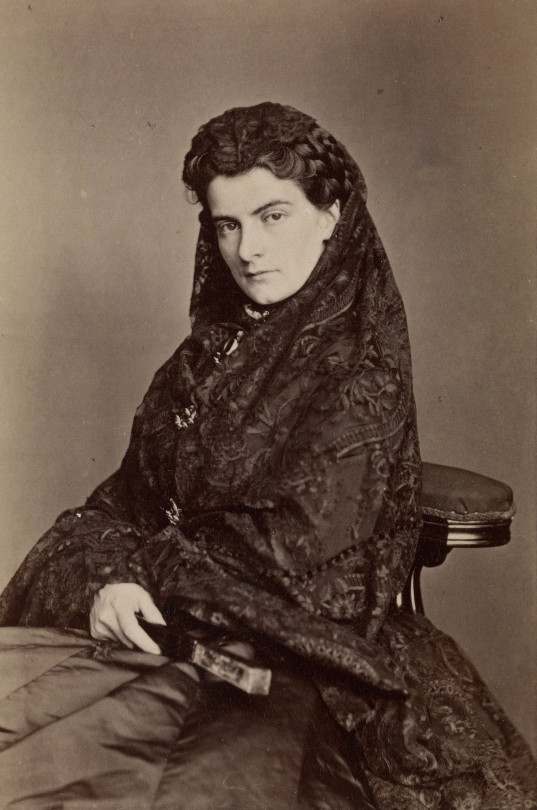
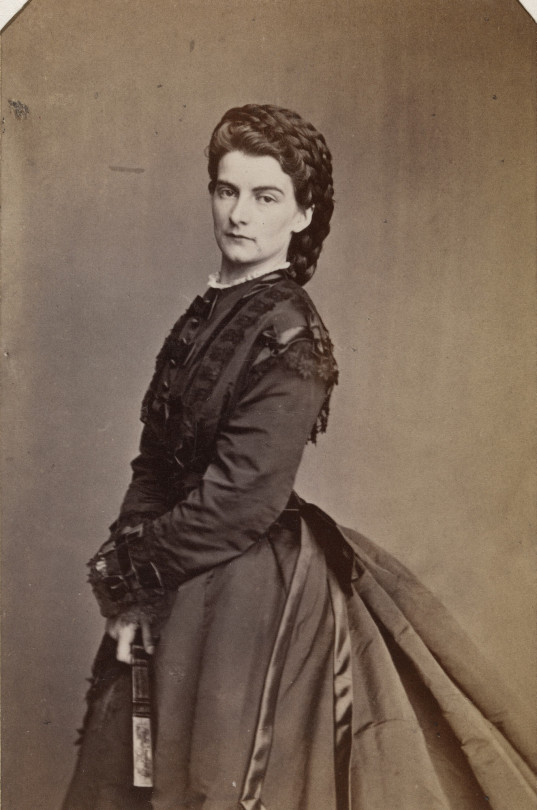
While Helene is the most known of Elisabeth’s sister solely because everyone and their moms know the (incorrect) story of her being “rejected” by FJ, the sixth child and third daughter, Marie, is the most famous sister for her own merits. She was the last Queen of the Two Sicilies as the wife of King Francesco II, and has gone down in history for leading the resistance during the Siege of Gaeta, the last stand of the Bourbon dynasty in Naples. She was only nineteen when her husband finally surrounded, and lived in exile for the rest of her life. After ten years of marriage Marie and her husband had one child, Maria Cristina, who sadly passed away while still a baby. They tried to have more children, but all her pregnancies ended up in miscarriages. She spent the rest of her life traveling; when WWI broke she settled down in Munich, where she died aged 82 in 1925.
Marie has gotten an interesting reputation: she is either known for being the brave queen who stood up next to her troops until the end, or for being a haughty woman who deeply envied her imperial sister and lived full of resentment. The first is just one, although crucial, brief moment in her life; and the second is literally just what Mária Festetics, one of Elisabeth’s ladies-in-waiting, thought of her. Once I realized how little we actually knew about Marie, how much is just hearsay and speculation, she became fascinating to me, but sadly we still don’t have a good biography about her that uses primary sources instead of relying in gossipy second hand accounts.
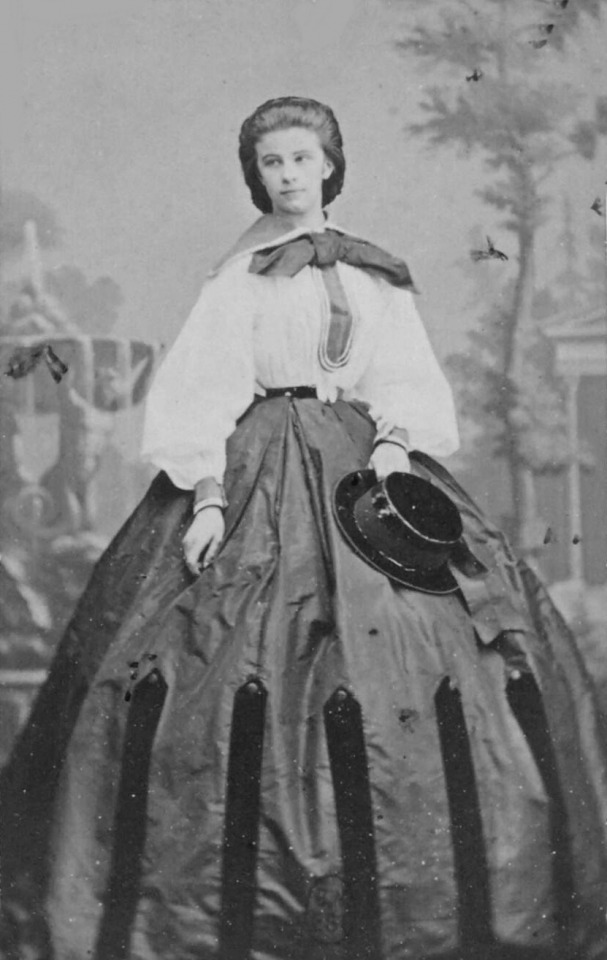

Mathilde, called “Spatz” (Sparrow), is the sister we have the least information of. She and Marie were the closest of the sisters; they were always together, and would often even dress the same (as you can see in the Stieler portrait). In 1861 Mathilde married Prince Luigi, Count of Trani, half-brother of Marie’s husband, and joined her sister in Rome, were the Bourbons in exile had settled their court. The marriage turned out to be unhappy, since her husband was an alcoholic and cheated on her, though they did had one child: Maria Teresa, called “Mädi”, born in 1867. Mathilde and Luigi separated eventually, though she did went to his aid and nurse him when he was sick. But the person she dedicated her life was her daughter, who for many years suffered from poor health (likely sclerosis); Mathilde took care of Mädi until her death, aged only 42. She spent the last years of her life with her sister Marie, and died only months after her, in 1925.
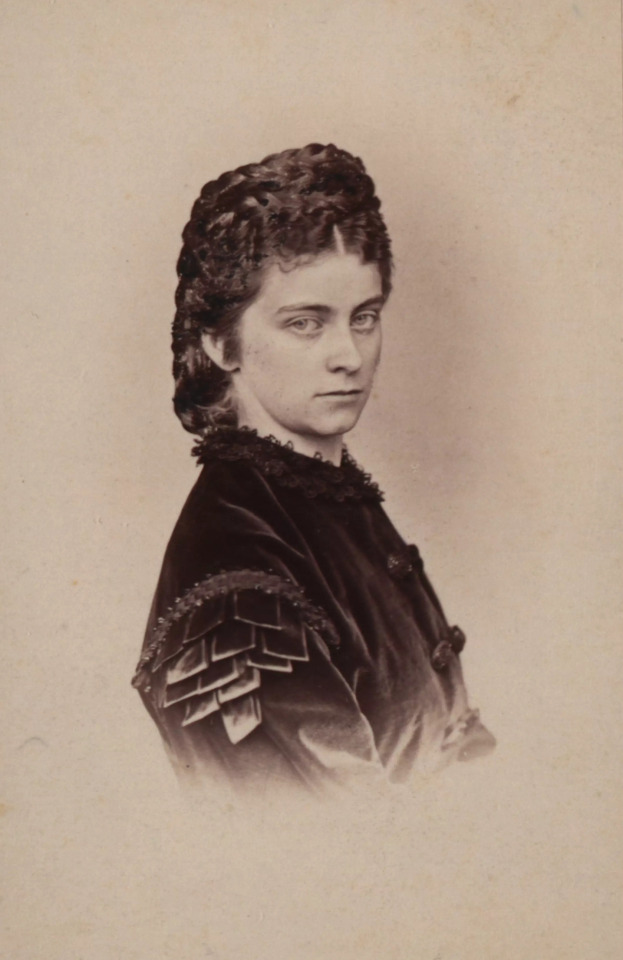
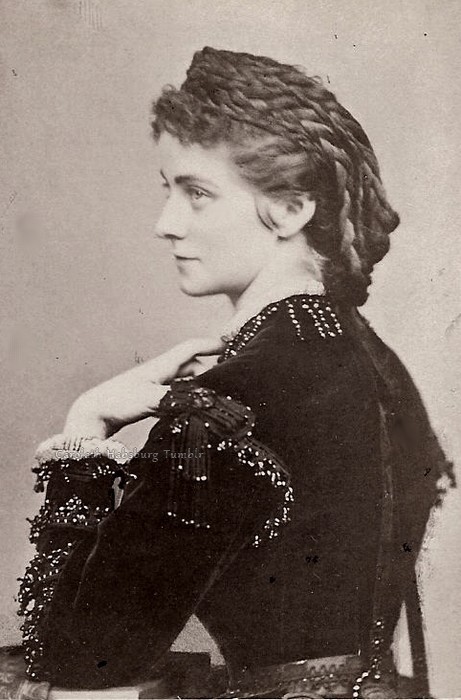
The youngest daughter, Sophie, born in 1847, is probably the most “romantic” of the Wittelsbach sisters. Just like Helene she has gone down in history for being a “rejected bride”, though in her case, it’s actually true. She was briefly engaged to her cousin Ludwig II of Bavaria, and it was an absolute disaster: he had no interest in marriage (not really that surprising when you consider that he was gay) and often publicly snubbed Sophie; she in turn was absolutely miserable because she felt he was playing with her. Ludwig kept postponing the wedding until Sophie’s father, Duke Max, send him an ultimatum, to which the king responded by just canceling it. As if these months hadn’t been stressful enough for Sophie, during this time she also had an affair with Edgar Hanfstaengl, the son of the court photographer. I don’t really know much about this liaison, only that she was aided by two ladies-in-waiting in order to meet him in private and that some love letters she wrote to him have survived. But whatever the extent of her feelings, the relationship could never become serious, and one year later she married Prince Ferdinand of Orléans, Duke of Alençon, a grandson of King Louis Philippe I of the French. I don’t know if this marriage was ever a love match or if Sophie simply wanted to settle down for good after all her failed romantic experiences; whatever the case they did have two children, Louise and Emmanuel. The Orléans had been living in exile in England since the deposition of Louis Philippe, and only after the fall of the Second French Empire in 1872 were they allowed to return to France. This probably improved Sophie’s mood, since she had suffered from depression since her children’s birth, and the English weather didn’t make her feel better.
After the death of her former fiancé Ludwig II in 1886, Sophie fell ill and on advice of her brother Gackl she searched for a treatment in Munich under a Dr Glaser. But while he treated her she fell in love with her doctor, who was also married with children. This time Sophie didn’t want to give up her enamored, and did something unthinkable for a woman of her status in the 19th century: she sought for a divorce from Ferdinand. Sadly things didn’t work out for her, because her husband, on the advice of her brother Karl Theodor, retaliated by having Sophie interned in a mental clinic for “moral insanity”, where she suffered the appalling “treatments” for mental illnesses of the time. After seven months she was considered cured, and allowed to leave the institution. She never again tried to divorce.
Sophie dedicated the last years of her life to charity work. In 1897 she was one of the organizers of the Bazar de la Charité, an annual charity event held in Paris since 1885, and was in the place when an accident set it on fire, taking the lives of 126 victims. She was one of the victims of the fire, and although she had the chance to leave she refused she refused to abandon the Bazar until everyone else was out, guiding and helping people to find the exist until her last moments. She had been fifty-years-old.


Lastly the youngest child Maximilian Emanuel, nicknamed “Mapperl”, is the brother we know the least about. Born in 1849, he was only two years and a half younger than his sister Sophie, whom he was the closest to: they were often referred as “die Kleinen” (the little ones). As his eldest brothers he did a military career, and fought both in the Seven Weeks War (aged only sixteen!) and in the Franco-Prussian War. At Sophie’s wedding he met and fell for a cousin of the groom, Princess Amalie of Saxe-Coburg and Gotha, which would have been great… if she hadn’t been already engaged to Prince Leopold of Bavaria. Here’s when things get a bit messy: according Briggitte Hamann, Elisabeth found out about the situation and decided to step in and free Mapperl’s beloved… by introducing her daughter Gisela to Leopold. Which is. Hmmm. A questionable thing to do. However, other authors claim that Elisabeth actually had nothing to do with that, specially considering that Mapperl’s wedding took place three years after Leopold and Gisela got engaged - if the goal was to make Amalie available, he definitely took his sweet time to make his move. One day I’ll look deep into it because I’m genuinely curious as to which is the truth; whatever the case, both couples had happy marriages, so good for them. Max Emanuel and Amalie had three sons: Siegfried, Christoph and Luitpold. Sadly Max Emanuel died quite unexpectedly in 1893 from an ulcer, aged only 43-years-old.
Again, this is only an introduction to the siblings, there’s far more information out there that I could possibly put in a single post. Thank you for your question! The Dukes and Duchesses in Bavaria are really interesting an I think they deserve the spotlight as much as their imperial sister.
#a lot of this i wrote from memory + copying my own previous posts + checking dates and names on wikipedia#so please forgive my lack of sources and sorry if there are mistakes!#house of wittelsbach#duke ludwig wilhelm in bavaria#helene in bavaria hereditary princess of thurn und taxis#karl theodor duke in bavaria#queen marie sophie of the two sicilies#mathilde in bavaria countess of trani#sophie in bavaria duchesse d'aleçon#duke maximilian emanuel in bavaria#asks
30 notes
·
View notes
Text
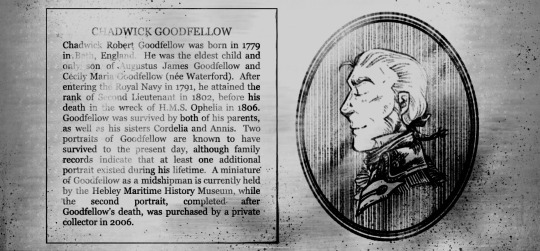


sometimes you start to wonder what the historical record for the guys you made up looks like in the fictional world where they existed. and then you make some fake documents about it.
[moth and compass is a collaboration with @natdrinkstea!!!]
#em draws stuff#oc time again hehe#moth and compass#the lieutenant: chadwick goodfellow#the cannon spike: matthew worley#Get Wikipedia-ed! [my writing style is not very good but you'd best believe that my typefaces and colors are as accurate as can be]#do not really like the way that semi-realistic older matthew turned out but I was tired of looking at him. So.#genuinely very proud of Poorly Scanned PDF Goodfellow though. fiddled around with textured eraser settings for Hours and it was Worth It.#anyway now it's FUNFACTS time! since this is of course not the only lore that there is on these guys#but just what one might find if you tried to research them now in m&c-verse#as we are in the timeline where these are just guys from mine and nat's heads there is More That Can Be Said#such as that the drawing of goodfellow in that article is copied from the second portrait of him#and if you've been paying attention to previous goodfellow drawings you may have seen it!#I've also previously drawn the midshipman miniature and it's around somewhere as well#also matthew + faith + george were all in a relationship while george was alive#but too few of their letters survive for wikipedia editors to confirm that :/#I feel. Weird about posting this for some reason. but it may just be on account of that it is fully 1am when I'm writing this. ah well.#also the places mentioned in here are Made Up also#there Was in fact a historical hms ophelia but she was over a hundred years later so Shhhh
36 notes
·
View notes
Note
Hey, just pointing it out, the Pokemon's name is just Orthworm, not Orthoworm /lh
Oh dear D: I'll re-tag on the reblog, and if it moves on, there will be an updated image!
#inquiries#gen 9#(for filtering purposes)#i did actually try to copy and paste as much from my spreadsheet as possible (where everything is directly copied from Wikipedia)#to avoid errors like this--like hisuian qwilfish is Only wrong on the image where i typed it out#OHHHHH just looked at it again and this is one of the posts i remade to add the DLC pokemon in#i must have typed things in based on the image (where i originally messed up) 😭 that'd do it
57 notes
·
View notes
Text
“Marissa!” Echidna screamed, her voice guttural, voiced from five different mouths. “Mars! It’s too soon! I want to kill them! I want to kill them all! Kill this world! Destroy this universe that did this to me! Not yet, Mars!”
What a sane and rational thing to say!
#Kylia Reads Worm#Honestly given what I knew about Sundancer before getting to Arc 19#I figured it was gonna be Grue's power copying that would create the sun that killed Echidna#I did know about that part from IIRC the wikipedia summary but I figured Sundancer herself wasn't going to be the one to do it#Given some of the commentary I've seen around her
6 notes
·
View notes
Text
The Inku Language
"Inku is an Indo-Aryan language spoken, at least historically, throughout Afghanistan by four of the country's nomadic communities: the Jalali, the Pikraj, the Shadibaz and the Vangawala.
Each of the four groups speaks a variety with slight differences compared to the others. According to their local tradition, their ancestors migrated in the 19th century from the Dera Ismail Khan and Dera Ghazi Khan regions of present-day Pakistan. Such an origin suggests that Inku may be related to the Saraiki language spoken there, though nothing is conclusively known.
The total population of the four Inku-speaking groups was estimated to be 7,000 as of the end of the 1970s. There is no reliable information about their present state, though it is unlikely that many have survived the subsequent upheavals in the country, and according to the entry in Ethnologue, which however may not necessarily refer to this language, the last speakers "probably survived into the 1990s".
Linguistic materials about the varieties spoken by the Shadibaz, Vangawala and Pikraj were collected by Aparna Rao in the 1970s, but they have not been published or analysed yet.
The following is an extract of a text narrated in 1978 by a man of the Chenarkhel subgroup of the Vangawala:
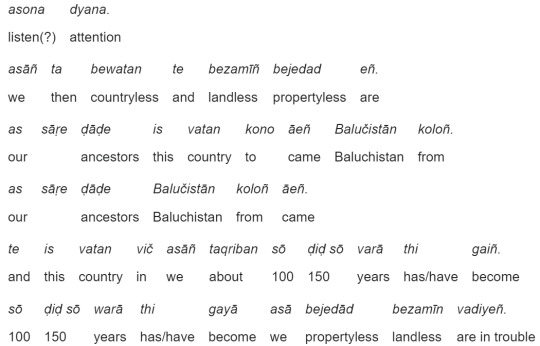
#the way i can understand most of this...#anyways this is all from wikipedia i havent had a chance to look at the references yet but there are a lot#i just couldnt contain my excitement at learning about a new language so i had to copy it all here for now#language#inku#afghanistan#indo aryan#dera ismail khan#saraiki#seraiki
5 notes
·
View notes
Text
the 3 month recovery from hip replacement surgery was more enjoyable than writing this stupid master's thesis
#i cannot write pls kill me now#copying from wikipedia isn't plagiarism you cannot sue me fuckers#just give me the diploma ao we can all be done with this bullshit
4 notes
·
View notes
Text
two of him


[ image desc: two pictures of laughing doves (Spilopelia senegalensis) seen outside of a window. the laughing dove is a long-tailed, slim pigeon. it is pinkish brown on the underside with a lilac tinged head and neck. the head and underparts are pinkish, shading to buff on the lower abdomen. a chequered rufous and grey patch is seen on the sides of the neck and is made up of split feathers. the upper parts are brownish with a bluish-grey band along the wing. the back is uniform and dull brown. the tail is graduated and the outer feathers are tipped in white. // end id ]
#copied most of the description from wikipedia . sorry#low spoons#but i felt like adding some detail to how they look ..... theyre so pretty .....#♜ — doves !#🌙birdposting
12 notes
·
View notes
Text
i FINALLY after about 2 years of holding onto it, listened to that album i found outside by a dumpster in NJ going in blind (Dave Starr's The Nearer the Bone the Sweeter the Meat). and its a comedy show. from '62. and boy did this dude yuk it up about faggots huh. and thats whats just on the "day show" side
its being sold a couple places online (amazon and ebay) but i cant find any infos about it other than its cover art being on a few "the most disturbing cover arts ever" lists. and im glad im not the only one who thinks its creepy
there's a video on youtube about it that was taken down (probably for the content??) .. if i cant find anything else on him i'll download this from the record player i bought and upload it on like archive.org just so that its preserved. i dont like .. AGREE with the content but i think it should be preserved
#he made a joke about a fag getting a hysterectomy and it made my eyes bug out LOL . did not expect that#cannot find a wikipedia page for this man also. like at all#i can find him mentioned on some other comedian's wikipedia page however .. but not one of his own#hmmm ...#my copy looks like it was signed on the back from him too. i wonder if its legit.#i dont know that he was big enough for this to even be verified if i sought out getting it checked#but who knows. i'd love to be able to have it be really his
1 note
·
View note
Text
Having a special interest in Windows OS is just:
*Microsoft won’t distribute this software* *Microsoft won’t distribute this software* *The new OS isn’t backwards compatible with a lot of the old products anymore* *Ooh this is a cool new feature* *Microsoft won’t distribute this software*
#literally the Wikipedia page for abandonware lists Microsoft as an example of a company that forbids users from accessing abandoned software#which is just very sad to me#because so few copies of the old OS and their supporting hardware are left#and I want them to be preserved an accessible for future generations#I want to be a weird old lady telling ppl about Windows 40-60 years from now
3 notes
·
View notes
Note
Your post on plagiarism reminded me of an assignment for a course where we post it and have to review two other people’s work and there was this one person who just straight up copied and pasted from the Professor’s PowerPoint slide. Like really you didn’t think no one would notice?
Srsly come on guys there's a reason for the "change it a little bit so the teacher doesn't notice" meme
#stop copy and pasting exactly from wikipedia/your girlfriend's paper/the example i the teacher wrote#anon#pocket talks to people
12 notes
·
View notes
Text


Controversy: disagreed with a man?
#I’m sure it’s just poorly written and there was something more to it than that.#like that’s hardly objectively written and also reads like it was written in the 1800s at the latest#so I assume it’s copy-pasted from somewhere#but like… two people have polite disagreement?#that’s a controversy?#idk maybe I will look into it later and maybe then I will end up editing Wikipedia again#ID in alt
3 notes
·
View notes
Text
i love setting goals for myself im so good at reaching goals
#so uh. angoroj (agonies) is the first feature film produced entirely in esperanto.#its passed into public domain a while back i think#my understanding of esperanto is about equivalent of taking a year of a language class#because. yaknow. thats practically what i did.#i spent about a year of math class teaching myself esperanto to make it look like i was actually getting stuff done#but man. the wikipedia article on this film is practically empty. i feel like someone oughta give at least a shitty summary.#this is like. a somewhat big thing. maybe the esperanto wikipedia has more on it but that thing's mostly dead.#front page for it hasnt updated since like 2015#i think it'd be good practice to try to make a transcript of it in english.#i mean i'd do a shit job of it at my current level of understanding.#but shit is better than nothing right?#think i've got a decent copy of it from the archive#judging from the credits and summary placed at the beginning of it (spoken in very fast esperanto)-#-it looks to be about some kind of crime family. and i believe it was either filmed or takes place in paris#hhrhrhrg why are the words for “both” and “too” so hard to tell apart.#fuck it. in case this goal ever goes anywhere ->#Mios Agonies
7 notes
·
View notes
Text
oh no I found out my girl is a conservative
#text post#im in the middle of reading the women (1936) and i decide to look up clare boothe luce's wikipedia page#and im like OOOOOHHHH NOOOOOOO#this is almost as bad as when i found out charlotte perkins gilman (of yellow wallpaper fame) was a proto-white nationalist in 2019#that was right after i bought a copy of herland from a used bookstore that i still haven't read#im not saying i never will but you know!!! that discovery put a damper on my enthusiasm if you can imagine!!!!#im already halfway through the women and im just tearing through it. i started a couple hours ago#ive seen parts of the film adaptation on tcm but i didn't realize the play was in this old book i got awhile back#plays by and about women published in the 1970s. ive read a few of them#and ive had this book almost 5 years i think? for shame i haven't read them all yet#is what i was thinking to myself earlier today#oh well. the women is so far a really good and clever play fwiw#the anthology i mentioned is worth buying if you ever find it in a used bookstore for $3.99 like i did
2 notes
·
View notes